Dog aggression is common but can be reduced and corrected, to bring the dog back to a balanced state with proper handling techniques and training.
There are many reasons why dogs can become aggressive (either toward people or other dogs), or guard their resources such as food, toys, crate, and even their beds. Environmental factors and past events can and often do contribute to these habits and problems.
The most common problems I work with are identified and described below.
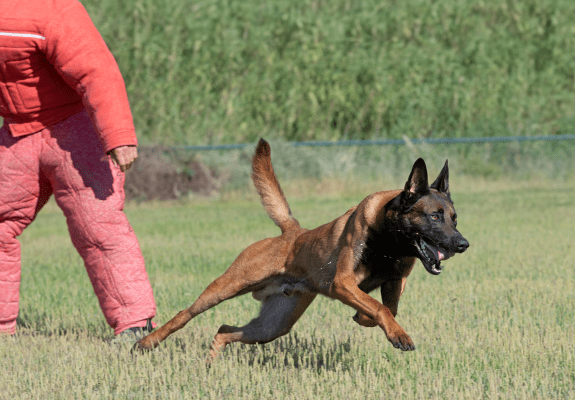
When animals and people are afraid of something, they prefer to get away from that thing. This is called the flight response. But if escaping isn’t an option, most dogs will switch to a fight response. They try to defend themselves from the scary thing. So a dog can be afraid of a person or another animal but still attack if they think this is their only recourse.
A fearful dog will normally adopt fearful postures and retreat, but may become aggressive if cornered or if it feels trapped. Some dogs will cower at physical punishment but will attack when a threatening person reaches for them.
Fearful dogs sometimes run away from a person or animal that frightens them, but if the person or animal turns to leave, they come up from behind and bite. A fearful dog is motivated to bite and run away.
Related to fear aggression is defensive aggression. The primary difference is the strategy adopted by the dog. Defensively aggressive dogs are still motivated by fear, but instead of trying to retreat, they decide that the best defense is a good offense. Dogs who are defensively aggressive exhibit a mixture of fearful and offensive postures. They may initially charge at a person or animal who frightens them, while barking and growling. The defensive aggressive dog often delivers the first strike.
The vast majority of dog-child problems I encounter involve children under the age of 6 years. Dogs that have been breed as guard dog types or dogs that have a history of being aggressive should be avoided. Large, high-energy dogs that can knock children over would not be the best of choices either. Puppies require almost as much time as a child does.
As a behavior specialist, many of the problems I encounter occur because a dog was acquired because the dog would be good for the children or the child begged for one but the parent did not really want a dog.
If the parent is not one hundred percent committed to caring for and training the dog, then I usually discourage them from acquiring a dog. Otherwise it is not fair to the child or dog. Dogs can teach a child responsibility, empathy and compassion, but remember young children are not capable of properly training or completely caring for a dog. The parent must always take full responsibility for the pet.
When dogs bite children, it often starts as a warning bite. The warning bite is often to the face or the hand. It is not usually serious medically.
Regardless of the medical nature, I consider any dog bite serious. It is important to understand when a dog is unhappy with a puppy (child) he will use a series of body positions to signal that he is unhappy and the subordinate dog had better stop what he is doing.
If the subordinate dog still does not stop then the dog will growl and possibly bare his teeth. If the subordinate dog still refuses to obey, the dog will snarl and quickly bite the subordinate dog. The bite is not intended to injure the dog but is meant as a stern warning and punishment.
Unfortunately, children are not able to interpret the dog’s signals, and the dog is not capable of communicating in any other way. Therefore, almost all dog bites are a result of failure on the parents’ part to protect the dog from the child.
When I am called into a bite case, I first have to teach the parents how to create safe space for not only the child but also for the dog, Then I need to address the training of the dog with the family and begin stress reduction techniques for the dog. If your dog shows any signs of aggression towards any child, consult a professional trainer or a behavior specialist. Do not try doing this type of training on your own.
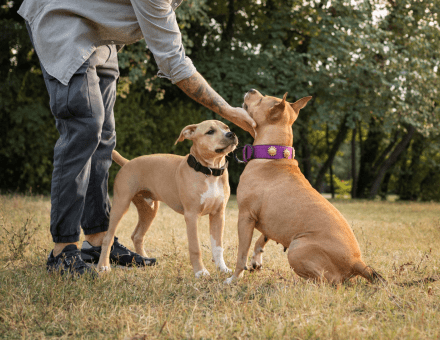


Dogs evolved from wild ancestors who had to compete for food to survive. Even though our dogs no longer face such realities, many still show the tendency to guard their possessions from others, whether they need to or not.
Some dogs only are about their food. These dogs might react aggressively when a person or another animal comes near their food bowl or approaches them while they are eating.
Other dogs guard their chew bones, their toys, or things they have stolen. Still others guard their favorite resting spots, their crates, or their beds.
Some dogs will hide their cherished things around the house and guard them from unsuspecting people or animals that have no idea that they are valued objects.
Truly aggressive puppies display behaviors such as biting, snapping, and growling in situations they should not, like normal petting and handling from people. All puppies will bite and growl in play, but not with the intent to cause harm to another dog or a person.
The two main causes for puppies to act aggressive are a physical problem or a lack of socialization.
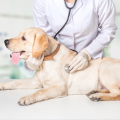
A physical problem may be something that causes your dog pain. If this is the case, a veterinarian should be consulted for proper diagnoses. For 99% of the time I see aggressive puppies, it’s due to a lack of socialization or a traumatic experience that happened.
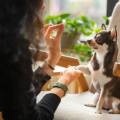
To address these issues requires socialization and desensitization. My approach is to teach the puppy that scary things lead to a positive interaction. I teach the puppy that a previously fearful experience can have a positive emotional association.
There are many reasons for dogs being aggressive to other dogs. To begin to understand the solution of dog aggression you must first understand what triggers your dog’s aggression.
One of the more common reasons a dog becomes aggressive is because that dog has been attacked by another dog. Pet owners need to understand that once their dog has been attacked or badly frightened by another dog, that dog can be aggressive toward other dogs (dog-aggressive) its entire life.
For young puppies, an owner should never allow his puppies to be around strange dogs. This can turn a friendly puppy into an aggressive puppy.
The same goes for dog owners who take their dogs to dog parks. There is no way knowing if one of the dogs in that park has dominance or aggression issues.

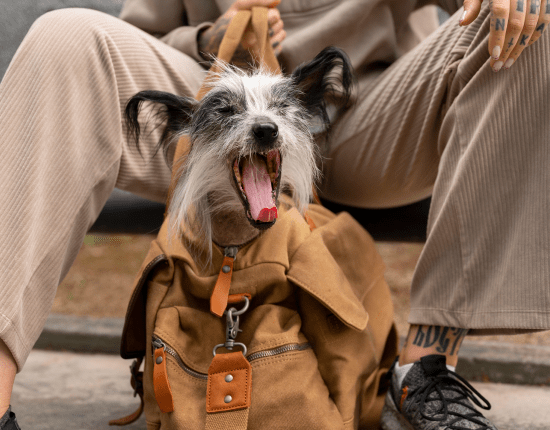
If there is an aggressive dog at the park and it attacks your dog, you now have a dog-aggressive-dog, because one dog attack is all it takes to change a happy-go-lucky dog into a fearful and aggressive dog.
It is important to understand that a dog looks to the owner “pack leader” for protection when faced with a threat. Do not think your dog should try and protect themself and act tough. Nothing could be further from the truth. Our dogs look to us for leadership and protection when faced with a threat. It’s part of their genetic make-up.
Owners that stand by and allow strange dogs to approach their dog lose face in the eyes of their dog. Once a dog knows that its owner is not going to protect them, their fear takes over and they move into flight or fight. At first this may just be some barking and trying to act aggressive. When a dog sees this works, its aggressive behavior displays in intensity and can worsen over time.

 Gary is a great trainer who has really helped me get "unstuck" in trying to train my two young rescues. I have had many dogs that I have successfully trained in the past, but couldn't get beyond the 80% mark with this young, bonded pair. His insights and behavioral approach not only make sense, but it works! Both dogs are much more relaxed and definitely obedient 🙂 The dogs and I all enjoyed the training and will continue to apply everything we learned!
Gary is a great trainer who has really helped me get "unstuck" in trying to train my two young rescues. I have had many dogs that I have successfully trained in the past, but couldn't get beyond the 80% mark with this young, bonded pair. His insights and behavioral approach not only make sense, but it works! Both dogs are much more relaxed and definitely obedient 🙂 The dogs and I all enjoyed the training and will continue to apply everything we learned! 


 There's no shortage of five-star reviews for Gary Maria, and I'm happy to add mine to the list. Working with Gary is undoubtedly an investment, but it's worth making. He equipped "us, the humans" with the knowledge and techniques to understand our new rescue, helping us build trust and communication. We started with a dog who ignored commands, chased our three cats, and did whatever he wanted. After just six weeks, thanks to Gary's guidance, he's become more confident and trusting in us. Watching his progress--and our own--has been incredibly rewarding. We highly recommend Gary!
There's no shortage of five-star reviews for Gary Maria, and I'm happy to add mine to the list. Working with Gary is undoubtedly an investment, but it's worth making. He equipped "us, the humans" with the knowledge and techniques to understand our new rescue, helping us build trust and communication. We started with a dog who ignored commands, chased our three cats, and did whatever he wanted. After just six weeks, thanks to Gary's guidance, he's become more confident and trusting in us. Watching his progress--and our own--has been incredibly rewarding. We highly recommend Gary! 


 Gary Maria, is an outstanding communicator and trainer. Our dog has fear aggression issues. Gary was able to give us the ability to recognize the signs and the tools to work with him to make him feel more comfortable. His approach has allowed our dog to be much calmer and feel protected. I would highly recommend Gary for your training needs.
Gary Maria, is an outstanding communicator and trainer. Our dog has fear aggression issues. Gary was able to give us the ability to recognize the signs and the tools to work with him to make him feel more comfortable. His approach has allowed our dog to be much calmer and feel protected. I would highly recommend Gary for your training needs. 

Gary Maria is one of the most sought after and experienced dog behavior specialists in the Bay Area and is recognized as an expert in the field.
Since 1977, Gary has improved the behavior of thousands of dogs using his combination of proven techniques.
Gary Maria is one of the most sought after and experienced dog behavior specialists in the Bay Area and is recognized as an expert in the field. Since 1977 Gary has improved the behavior of thousands of dogs using his combination of proven techniques.
